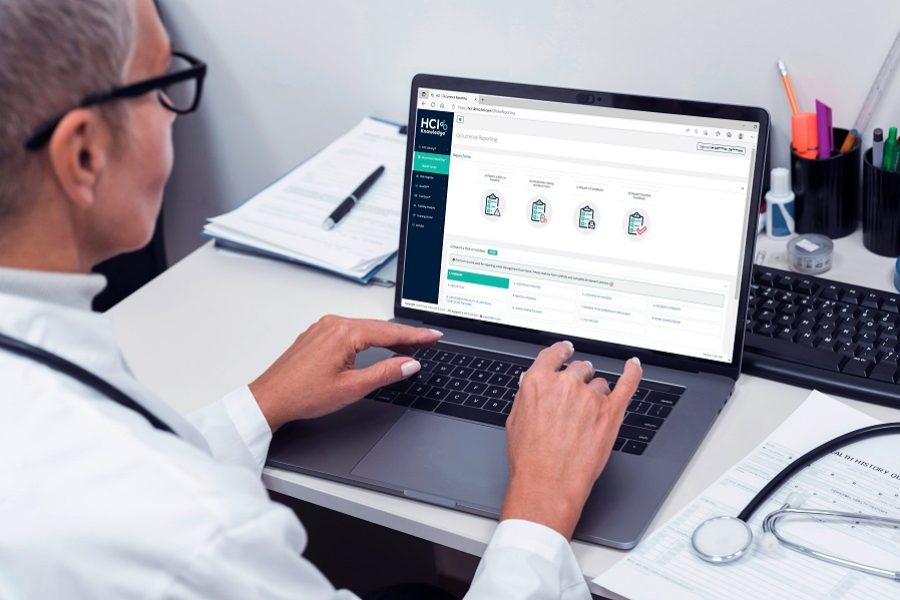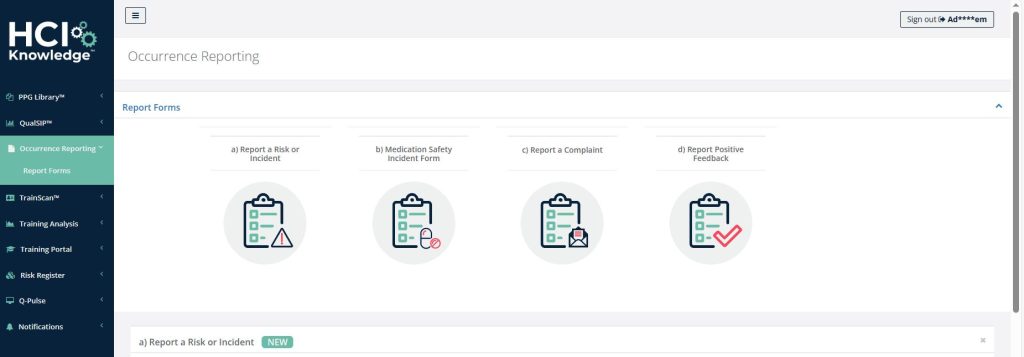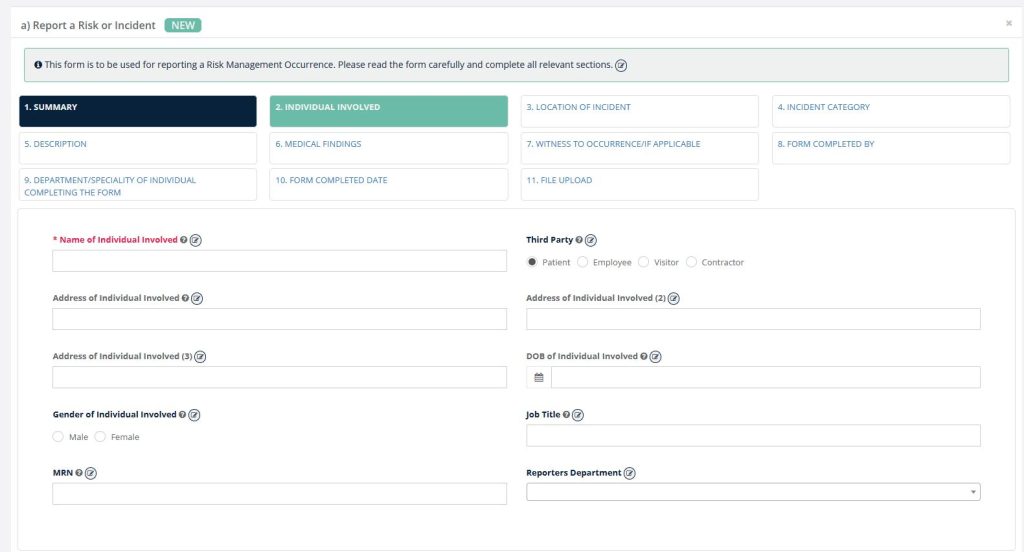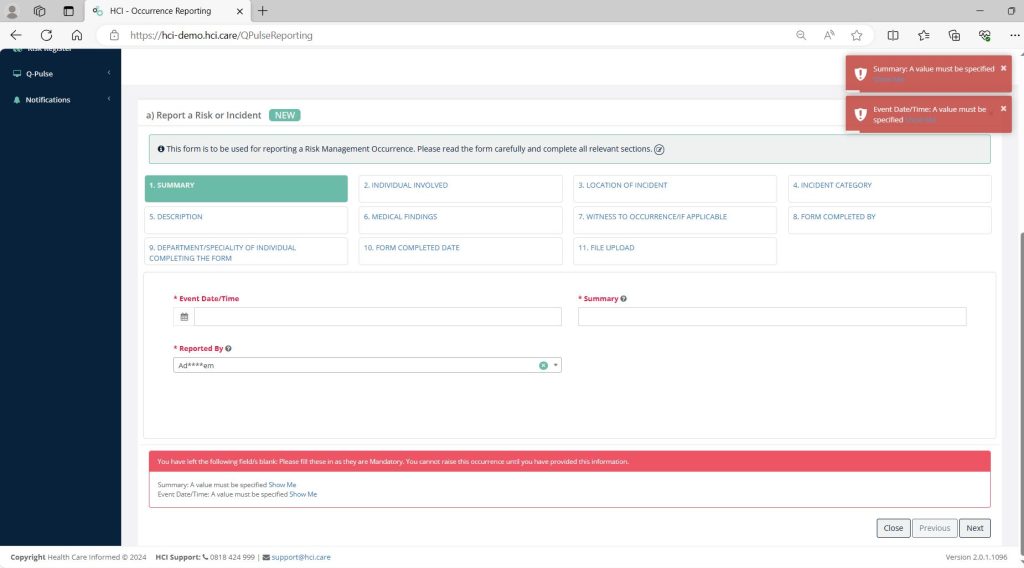Digital Transformation of Occurrence Reporting in Healthcare

Introduction
The importance of occurrence reporting in healthcare cannot be overstated. Timely and accurate reporting of incidents, risks, complaints, and feedback is crucial for patient safety, regulatory compliance, and the overall improvement of healthcare services. Traditional paper-based healthcare incident reporting systems are often cumbersome, time-consuming, and prone to errors.
The solution? Embrace digital health transformation to revolutionise your incident reporting process. Digital health transformation presents many opportunities for healthcare organisations to enhance efficiency, streamline operations, and improve the quality and safety of their services.
In this blog post, we will explore the considerations to choosing a healthcare incident reporting system and why HCI’s Occurrence Reporting solution could be a good fit for your organisation.
Digital Transformation Roadmap for effective Occurrence Reporting in Healthcare
1. Selecting the Right Technology
Choose an incident reporting system that aligns with the specific needs of your health or social care organisation. Look for features such as customisable occurrence reporting forms, user-friendliness, mobile accessibility, and integration capabilities with other systems. It is also important to consider the software provider who will manage the implementation, and potentially provide ongoing maintenance and support of the system. Choose a partner with experience in healthcare, who understands the regulatory environment and Quality and Safety Management Systems. A provider that combines quality information systems knowledge with healthcare regulatory, quality and patient safety knowledge will help you to implement a successful incident reporting system for your organisation.
2. Customisable Occurrence Reporting Forms
Design digital occurrence reporting forms that are easy to understand and adaptable to different types of incidents, risks, complaints, or feedback. Include fields for relevant details such as date and time or incident, patient information, location, type of incident/risk/complaint, a detailed description of the event, any findings, the outcome, and any supporting evidence such as pictures, documents etc.
3. Mobile Accessibility
Enable occurrence reporting through mobile devices to facilitate quick and on-the-go reporting by healthcare professionals. This ensures that healthcare incidents are captured in real-time, reducing the chances of information gaps and improving the overall accuracy of reporting.
4. Automation and Workflow Integration:
Implement automation to streamline the occurrence reporting workflow. Integration with existing systems, such as Quality Management Information Systems or data analytics tools, allows for seamless data transfer and reduces the need for manual data entry or duplication of workloads.
5. Real-time Analytics and Reporting:
Leverage digital tools to generate real-time incident reporting analytics and reports. This enables healthcare administrators to identify trends, patterns, and areas for improvement promptly. Analysing data trends can also help to make informed decisions, implementing preventive measures to mitigate future incidents.
6. Secure Data Storage and Privacy:
Prioritise data security and privacy by implementing robust encryption protocols. Ensure compliance with data protection regulations and reassure stakeholders that their information is handled securely.
How can HCI Occurrence Reporting help?
As mentioned above, when implementing a digital solution for occurrence reporting in healthcare, it is important to choose a system that is user-friendly for staff to ensure they can easily record occurrences such as incidents, risks, complaints, or feedback.
HCI’s Occurrence Reporting system is an online portal that allows your staff to easily report any incident, risk, complaint, feedback or learning, through dynamic reporting forms. The forms are customisable to your requirements and can reflect mandatory reporting requirements.

The fields within the forms are dynamic which means that the fields adjust depending on the criteria inputted. This helps to ensure that the forms are user-friendly, and the appropriate information is collected.

If a staff member forgets to complete a certain mandatory section, they will receive an alert to tell them which fields require completion. This helps to ensure that all the necessary information is included in the form before it is uploaded to the QMIS.

All completed forms are uploaded automatically to the Quality Management Information System and the appropriate person is notified via an email alert. Data around any reported occurrence can be viewed in HCI’s real time data intelligence portal, QualSIPTM.
QualSIPTM
QualSIPTM provides Senior Management with access to real time analysis of quality and safety data held within the QMIS. Data is presented in dynamic dashboards and graphs for incidents, risks, complaints, audits and document control. Managers can filter the data by department, timeframe, type, risk rating etc. Analysing this occurrence reporting data allows for risk areas or trends in the data to be identified, which informs timely decision making.

Conclusion
In conclusion, digital transformation of occurrence reporting in healthcare must be an essential part of your digital health strategy. It is a fundamental step towards ensuring patient safety, regulatory compliance, and overall efficiency. By embracing the right occurrence reporting software and following a comprehensive roadmap, healthcare providers can navigate the complexities of incident reporting, leading to improved outcomes for both patients and healthcare professionals.
At HCI we help providers of health and social care make intelligence driven decisions to attain, manage and improve quality, safety and regulatory compliance. Our digital health transformation specialists have been implementing Quality Management Information Systems, including healthcare incident reporting systems, in health and social care organisations for almost two decades. With our support you can have confidence that you are embedding a best practice incident reporting system that will transform your occurrence reporting processes.
For more information on HCI’s Digital Health Transformation Products and Services contact HCI at 01 629 2559 or info@hci.care.